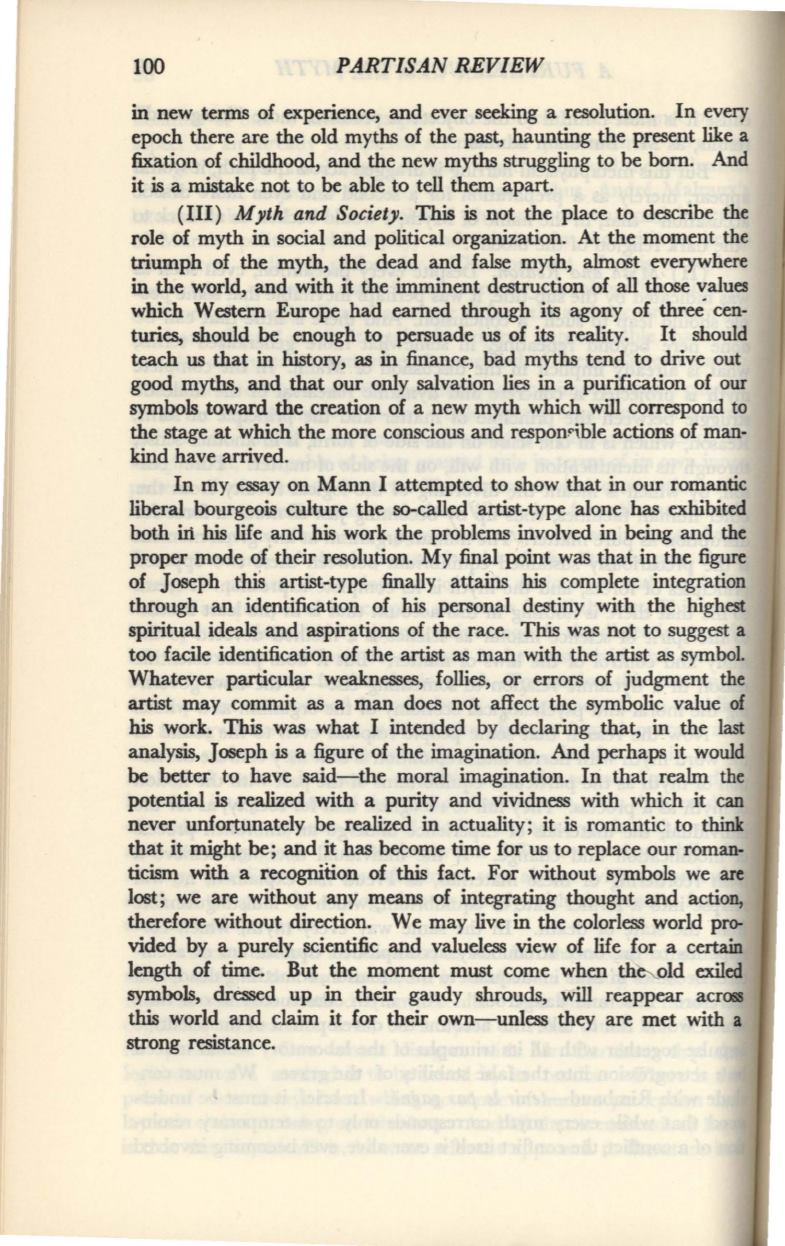
100
PARTISAN REVIEW
in new terms of experience, and ever seeking a resolution. In every
epoch there are the old myths of the past, haunting the present like a
fixation of childhood, and the new myths struggling to be hom. And
it is a mistake not to be able to tell them apart.
(III)
Myth
and
Society.
This
is not the place to describe the
role of myth in social and political organization. At the moment the
triumph of the myth, the dead and false myth, almost everywhere
in the world, and with it the imminent destruction of all those values
which Western Europe had earned through its agony of three cen–
turies, should be enough to persuade us of its reality. It should
teach us that in history, as in finance, bad myths tend to drive out
good myths, and that our only salvation lies in a purification of our
symbols toward the creation of a new myth which
will
correspond to
the stage at which the more conscious and
respon~"i.ble
actions of man–
kind have arrived.
In my essay on Mann I attempted to show that in our romantic
liberal bourgeois culture the so-called artist-type alone has exhibited
both
irt
his life and his work the problems involved in being and the
proper mode of their resolution. My final point was that in the figure
of Joseph thiS artist-type finally attains his complete integration
through an identification of his personal destiny with the highest
spiritual ideals and aspirations of the race. This was not to suggest a
too facile identification of the artist as man with the artist as symbol.
Whatever particular weaknesses, follies, or errors of judgment the
artist may commit as a man does not affect the symbolic value of
his work. This was what I intended by declaring that, in the last
analysis, Joseph is a figure of the imagination. And perhaps it would
be better to have said-the moral imagination. In that realm the
potential is realized with a purity and vividness with which it can
never unfortunately be realized in actuality; it is romantic to
think
that it might be; and it has become time for us to replace our roman–
ticism with a recognition of
this
fact. For without symbols we are
lost; we are without any means of integrating thought and action,
therefore without direction. We may live in the colorless world pro–
vided by a purely scientific and valueless view of life for a certain
length of time. But the moment must come when
th~ld
exiled
symbols, dressed up in their gaudy shrouds, will reappear across
this world and claim it for their own-unless they are met with a
strong resistance.


